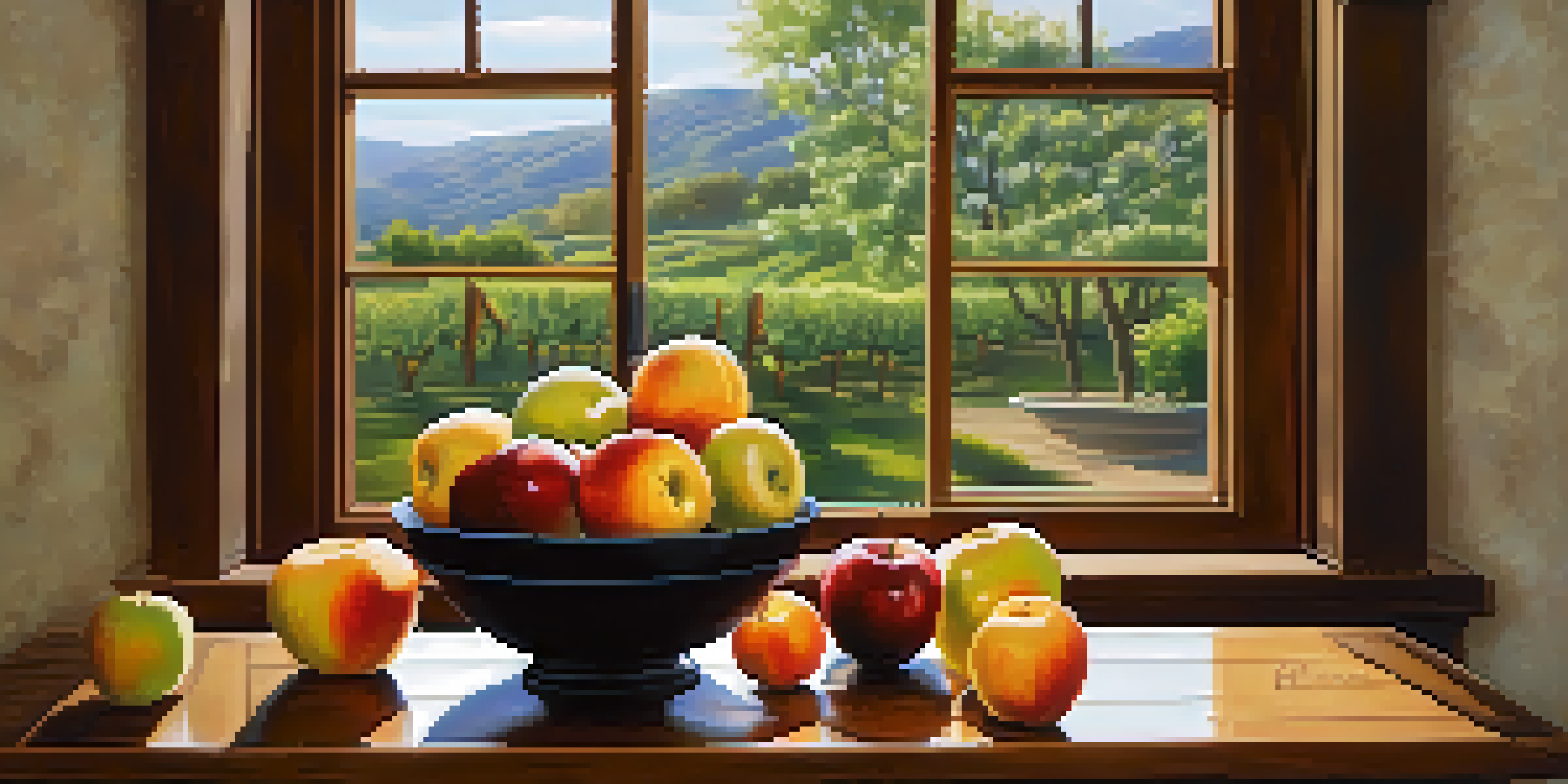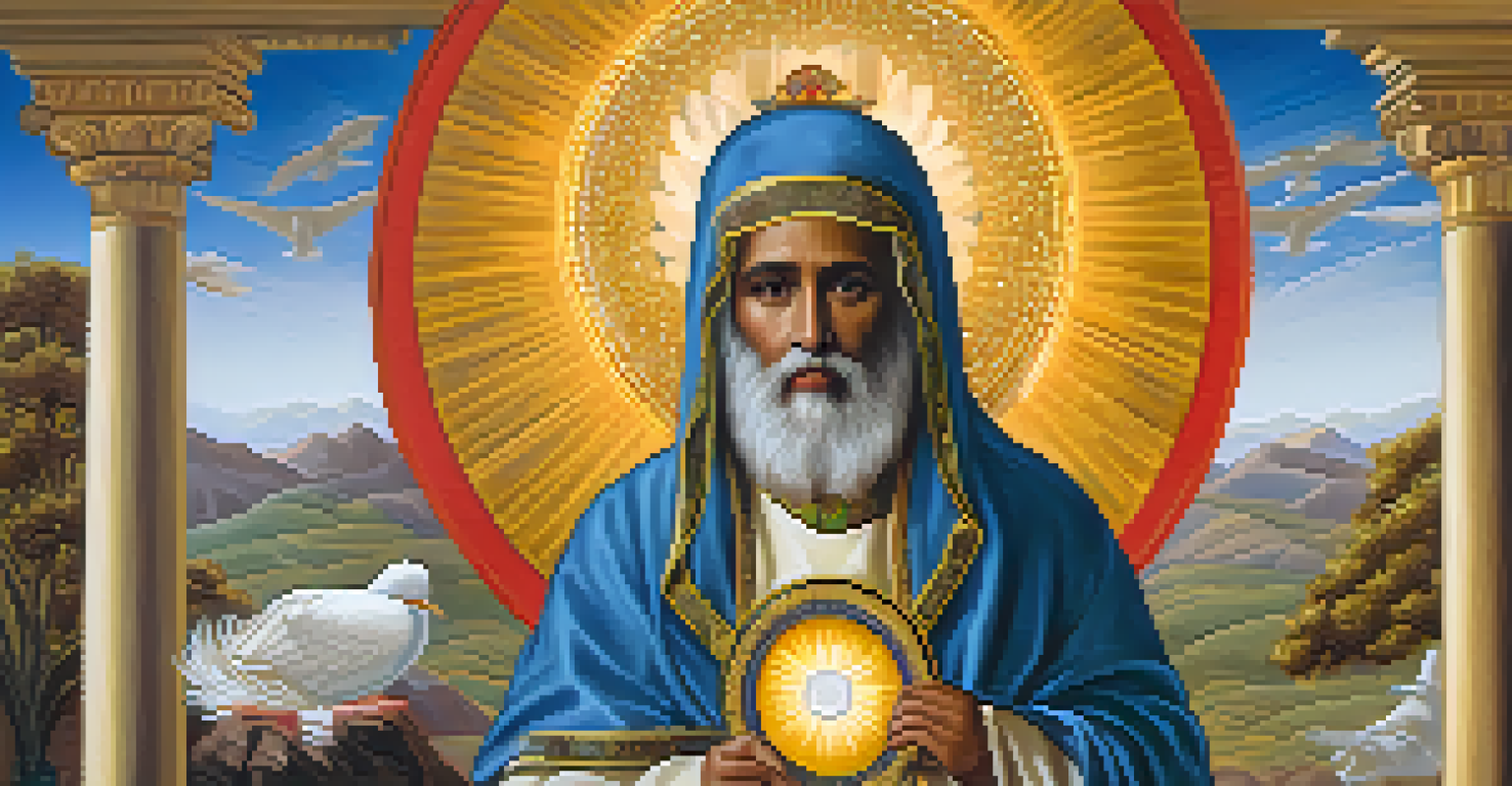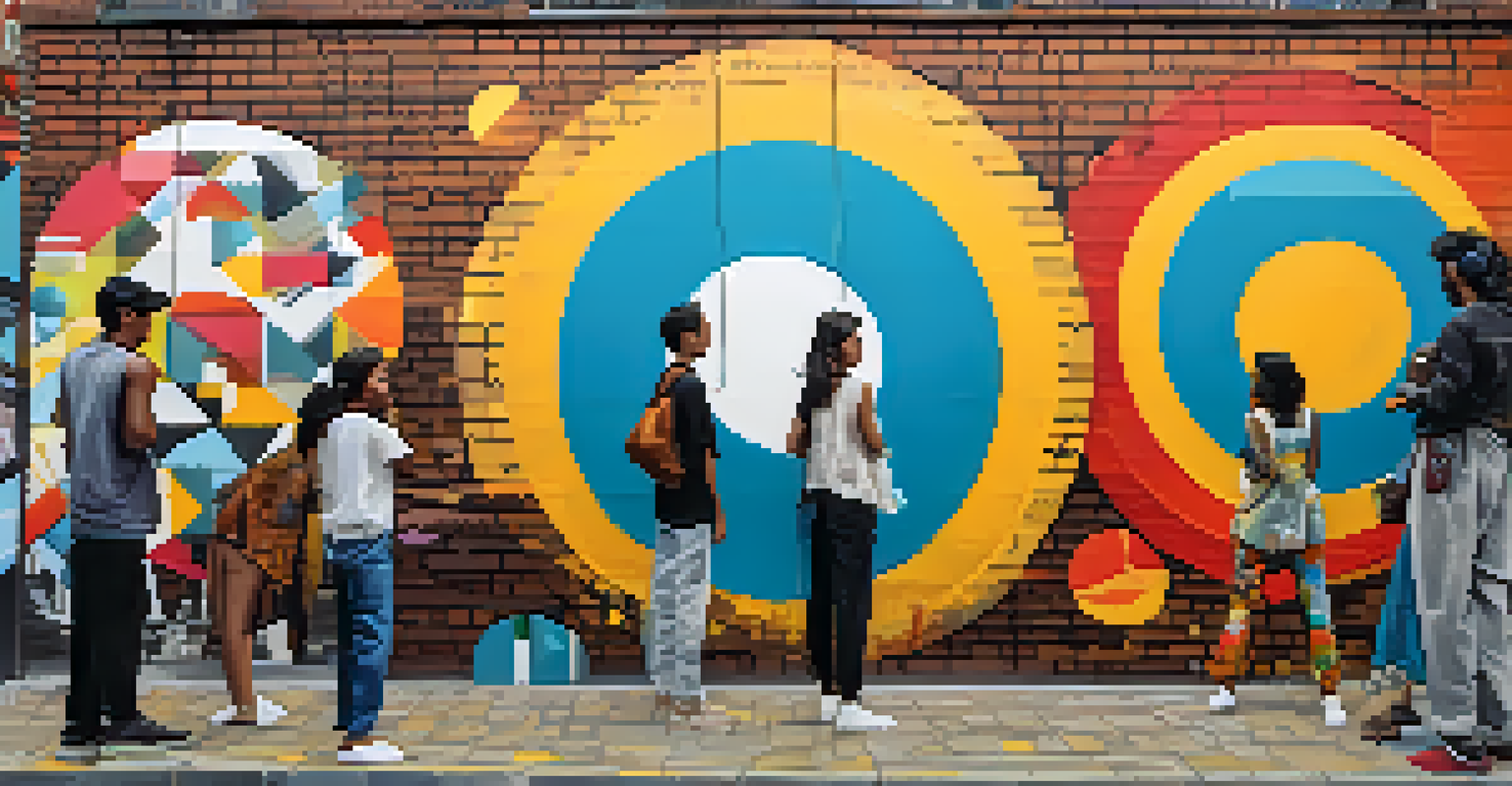Cultural Influences on Iconography in Historical Paintings

Understanding Iconography: What It Means in Art
Iconography refers to the visual images and symbols used in art, often representing deeper meanings or themes. In historical paintings, iconography serves as a language of its own, conveying messages that resonate with viewers across different cultures and eras. Understanding these symbols can help us unlock the stories behind the artwork and grasp the context in which they were created.
Art is the most beautiful of all lies.
For instance, a simple image of a fruit bowl can signify abundance or temptation, depending on the cultural lens through which it is viewed. By dissecting the iconography in paintings, we can appreciate how artists communicate complex ideas through seemingly straightforward images. This exploration of meaning not only enhances our viewing experience but also connects us to the cultural narratives of the past.
As we delve deeper into the cultural influences on iconography, we begin to see how various elements come together to shape the visual language of historical art. This understanding sets the stage for examining how specific cultures have influenced the development of iconographic themes over time.
The Role of Religion in Shaping Iconographic Symbols
Religion has historically played a pivotal role in the creation of iconography, particularly in Western art. For centuries, artists drew upon biblical narratives and religious figures to convey moral lessons and spiritual ideals. This practice not only reflects the beliefs of a culture but also serves as a means of educating the public about religious principles through visual storytelling.

Take, for example, the use of halos in Christian art. These circular symbols above the heads of saints indicate divine favor and holiness, immediately signaling their significance to viewers. Such religious iconography is not merely decorative; it serves as a powerful tool for conveying theological concepts and fostering a sense of community among believers.
Iconography Reveals Deeper Meanings
Understanding iconography unlocks the stories and cultural narratives behind artworks, enhancing our viewing experience.
As we analyze the relationship between religion and iconography, we can see how different faiths have contributed unique symbols and themes to the artistic landscape. This interplay enriches our understanding of how culture and spirituality are intertwined in the expression of art.
Cultural Heritage and Its Impact on Artistic Symbols
Cultural heritage is another significant factor shaping iconography in historical paintings. Artists often draw inspiration from their heritage, incorporating symbols, motifs, and styles that reflect their cultural identity. This practice not only honors tradition but also allows for the expression of unique perspectives and experiences within the broader artistic narrative.
Every artist dips his brush in his own soul, and paints his own nature into his pictures.
For instance, Indigenous art often features symbols that convey stories of creation, nature, and spirituality, deeply rooted in the cultural beliefs of the community. These images serve as a reminder of the rich history and values that define a culture, making them integral to the identity of the artwork. By understanding these cultural references, viewers can appreciate the depth and significance of the symbols used.
Examining the influence of cultural heritage on iconography helps us recognize the diversity of artistic expression across the globe. It encourages us to celebrate the richness of different cultures and the stories they tell through their art.
Political Influence on Iconography Through History
Political contexts have also played a crucial role in shaping iconography in historical paintings. Artists frequently used their work to comment on or respond to political events, ideologies, and figures. By embedding political symbols and messages within their art, they could convey their stance and provoke thought among viewers.
For example, during the Renaissance, many artists created works that celebrated the power and glory of political leaders, often depicting them in heroic poses. These paintings served to legitimize authority and reinforce the societal hierarchy of the time. Conversely, artists have also used iconography to critique or challenge those in power, embedding dissenting messages within their artworks.
Religion Shapes Artistic Symbols
Religious themes and symbols play a crucial role in shaping iconography, reflecting cultural beliefs and moral lessons.
By examining the political influences on iconography, we gain insight into the ways art can reflect and shape the socio-political landscape of its time. This understanding highlights the dynamic relationship between culture, power, and artistic expression.
The Influence of Social Changes on Artistic Iconography
Social changes, such as shifts in gender roles, class structures, and societal norms, have profoundly influenced iconography in historical paintings. Artists often respond to the prevailing social climate, using their work to reflect contemporary issues or challenge traditional views. This engagement with society allows art to serve as a mirror, revealing the values and struggles of a particular time.
For instance, the rise of feminism in the 20th century led to a reevaluation of how women were depicted in art. Artists began to challenge stereotypes and create iconography that represented women's experiences, strength, and individuality. This shift not only transformed the representation of women in art but also expanded the dialogue around gender and power.
By exploring the impact of social changes on iconography, we can see how art evolves alongside society, continually adapting to reflect new realities and perspectives. This dynamic relationship enriches our understanding of both historical and contemporary art.
Regional Variations in Iconography Across Cultures
Iconography is not monolithic; it varies significantly across different cultures and regions. Each culture brings its own symbols, narratives, and artistic techniques that reflect its unique history and values. This diversity enriches the global art landscape, showcasing the myriad ways in which human experience is expressed through visual forms.
For example, while Western art often emphasizes individualism and realism, Eastern art may focus on harmony, spirituality, and abstraction. These regional differences in iconography can be seen in the use of color, composition, and symbolism, indicating the distinct cultural priorities of each tradition. Understanding these variations allows us to appreciate the richness of global art and the stories behind each piece.
Social Changes Influence Art
Shifts in social dynamics, such as gender roles and class structures, profoundly impact the iconography depicted in art.
As we delve into the regional variations in iconography, we expand our perspective on art and culture. This exploration emphasizes the importance of cultural context in interpreting artistic works and fosters a deeper appreciation for the diversity of human expression.
The Future of Iconography in Contemporary Art
As we look to the future, it is essential to consider how iconography continues to evolve in contemporary art. Today’s artists are blending traditional symbols with modern themes, creating new narratives that reflect our rapidly changing world. This fusion of old and new allows for innovative expressions that resonate with diverse audiences.
For instance, contemporary artists may incorporate digital media, street art, or mixed media to redefine iconography. By doing so, they challenge established norms and invite viewers to engage with art in novel ways. This evolution of iconography not only keeps it relevant but also encourages dialogue about cultural identity and social issues.

By exploring the future of iconography, we can anticipate the exciting directions art may take as it responds to global challenges and shifts. This ongoing conversation between tradition and innovation keeps the spirit of iconography alive, ensuring that it remains a vital part of artistic expression.